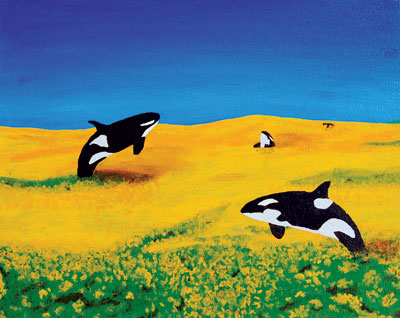All Nonfiction
- Bullying
- Books
- Academic
- Author Interviews
- Celebrity interviews
- College Articles
- College Essays
- Educator of the Year
- Heroes
- Interviews
- Memoir
- Personal Experience
- Sports
- Travel & Culture
All Opinions
- Bullying
- Current Events / Politics
- Discrimination
- Drugs / Alcohol / Smoking
- Entertainment / Celebrities
- Environment
- Love / Relationships
- Movies / Music / TV
- Pop Culture / Trends
- School / College
- Social Issues / Civics
- Spirituality / Religion
- Sports / Hobbies
All Hot Topics
- Bullying
- Community Service
- Environment
- Health
- Letters to the Editor
- Pride & Prejudice
- What Matters
- Back
Summer Guide
- Program Links
- Program Reviews
- Back
College Guide
- College Links
- College Reviews
- College Essays
- College Articles
- Back
A Win-Win Solution
SeaWorld is a place that children can visit and enjoy the process of becoming more educated with marine animals, especially orcas. It is a place that families can take their children and spend quality time with each other while at the same time engaging with animals by watching exuberating performances of orcas performing. Little do these customers know that behind all the smiles and performances there are a lot of things going on at SeaWorld that animal activists are trying to shut down. According to the documentary “Blackfish,” directed by Gabriela Cowperthwaite, SeaWorld separates killer whales and their young, is indifferent to trainer’s safety, and at SeaWorld “all killer whales in captivity are ‘emotionally destroyed,’ and ‘ticking time bombs” (Blackfish 2013). After watching the documentary, it is easy to become angry and want to make a change by shutting down SeaWorld. Going past the emotions, it is important to dig deeper into the research and find ways to benefit the orcas at their current living location.
When researching about the orca’s living space and how they are being treated, the truth can be hard. It is painful to see how unhappy the orcas are looking and how tiny their living quarters are. It is obvious how depressed the orcas are by looking at their dorsal fins, which are flopped over instead of standing straight up like they do in the wild. It is selfish as well as dangerous of humans to hold orcas captive just for the pleasure and entertainment. Therefore, scientists are trying to find ways to benefit the animals. Keeping the orcas in small quarters makes them agitated and unpredictable when the trainers work with them. According to Naomi A. Rose, Special to CNN, “the largest orca tank in the world is less than one ten-thousandth of one percent (0.0001%) the size of the smallest home range of wild orcas” (A Win-Win Solution par 3). An idea that scientists have from keeping the orcas from becoming “couch potatoes” in the SeaWorld tanks is to create marine sanctuaries where “captive orcas can be rehabilitated and retired” after their work at marine parks (A Win-Win Solution par 8). These sanctuaries would be located in netted off coves where the orcas would be able to retire in peace, without the constant parade of partons disturbing them. It is important to do the research and understand that when orcas have been held in captivity for the majority of their life, they are most likely not going to survive in the wild. This “would be a win/win solution to both the trainer safety and orca welfare dilemmas facing marine theme parks around the world,” and these sanctuaries would still keep the orcas in their ocean habitat while at the same time keeping an eye on them and making research.
The people who are interested in creating these sanctuaries have taken many things into consideration. Along with keeping the whales happy and safe, this solution would greatly benefit the orca trainers at the marine parks. Being in a larger habitat would not cause the orcas to be frustrated and bored, therefore, this would keep them from being too rough with their trainers and creating danger for them. Also, at the orca sanctuaries there would be experts that would train the orcas from outside of the water. People would still be able to visit the sanctuaries and gain more knowledge about them. They are aware of the fact that patrons are interested in gaining more knowledge and experience with orcas, so these sanctuaries will benefit orcas, trainers, and patrons. It is a win-win situation for all.

Similar Articles
JOIN THE DISCUSSION
This article has 0 comments.

I was inspired to write this piece after watching a documentary, "Blackfish," in school.